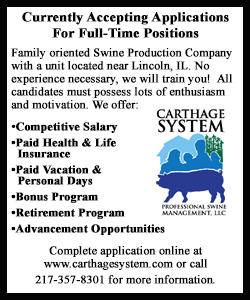|
 Fall
Care for a Healthier, Better Looking Lawn Fall
Care for a Healthier, Better Looking Lawn
By Melinda Myers
 Send a link to a friend
Send a link to a friend
[August 24, 2016]
As
summer fades into fall it is time to help lawns recover from summer
stress and prepare for the winter ahead.
Continue to mow your lawn as long as it continues to grow. Grow cool
season grasses like bluegrass, fescue and ryegrass 2-1/2 to 3-1/2
inches tall. Warm season grasses like bermudagrass, carpetgrass,
centipedegrass and zoysia should be grown at 1 to 2 inches tall
while St. Augustine should a bit higher, 2 to 3 inches, for best
results. Taller grass is better able to compete with weeds. And
there is no need to cut it shorter for the health of your lawn.
|
|
 Mow often, removing no more than one third the total height.
Leave these short clippings on the lawn. They will quickly break
down, adding organic matter, moisture and nutrients to the soil. Mow often, removing no more than one third the total height.
Leave these short clippings on the lawn. They will quickly break
down, adding organic matter, moisture and nutrients to the soil.
And as you mow you can take care of all those fall leaves at the
same time. Shred the fall leaves and allow them to remain on the
lawn. As long as you can see the leaf blades through the shredded
leaves your lawn will be fine. And just like the clippings, they add
nutrients and organic matter to the soil.
Fertilize your lawn with a low nitrogen, slow release fertilizer
like Milorganite (milorganite.com). University research has shown
that fall fertilization is the most beneficial practice for home
lawns. Less disease problems and slower weed growth means your lawns
- not the weeds and pests - benefit from the nutrients. Fall
fertilization also helps lawns recover from the stresses of summer
because it encourages deep roots and denser growth that can better
compete with weeds and tolerate disease and insects.

Those in colder regions growing cool weather bluegrass, fescue and
perennial ryegrass should fertilize around Labor Day and sometime
between Halloween and Thanksgiving, but before the ground freezes.
Homeowners in warmer climates growing warm season grasses like
centipede, Bermuda and zoysia should fertilize around Labor Day.
Apply a low nitrogen slow release fertilizer then and in early
October if overseeding the lawn. Make sure the last fall application
is at least one month prior to the average first killing frost.
Fertilizing later can result in winter damage.
Weeds often gain a foothold in the lawn during the stressful summer
months. A healthy lawn is the best defense. Even with proper care
weeds can bully their way into the lawn. Try digging, root and all,
to remove small populations of weeds. Weeding can be a great tension
reducer and physical workout. [to top of second
column] |

If this isn’t possible, consider spot treating weeds or problem
areas with a broadleaf weedkiller. Those looking for more organic
options may want to try one of the more eco-friendly products with
the active ingredient Fehedta or Hedta. Whether using traditional or
environmentally-friendly products read and follow label directions
carefully. All these products are plant killers and can cause damage
to other plants if not applied properly.
Fall, when the lawn is actively growing, is the best time to core aerate or
dethatch northern lawns suffering from thatch build up or compacted soil. Thatch
is a layer of partially decomposed dead grass plants that prevents water and
nutrients from reaching the grass roots. Use a dethatching machine to remove
thatch layers greater than one half an inch. Or core aerate the lawn to create
openings in the thatch layer and help reduce soil compaction to encourage root
growth and allow water and nutrients to infiltrate the soil.
Overseeding your lawn in the fall helps increase thickness and improves the
overall health and appearance of the lawn. For best results, overseed directly
after aerating.
Begin implementing some of these strategies and soon you’ll be on your way to a
healthier, better looking lawn for the coming growing season.

[Melinda Myers/Photo by Mark Avery]
Gardening expert Melinda Myers has
more than 30 years of horticulture experience and has written over
20 gardening books, including Small Space Gardening and the Midwest
Gardener’s Handbook. She hosts The Great Courses “How to Grow
Anything: Food Gardening For Everyone” DVD set and the nationally
syndicated Melinda’s Garden Moment TV & radio segments. Myers is a
columnist and contributing editor for Birds & Blooms magazine and
spokesperson for Milorganite. Myers’ website is www.melindamyers.com. |